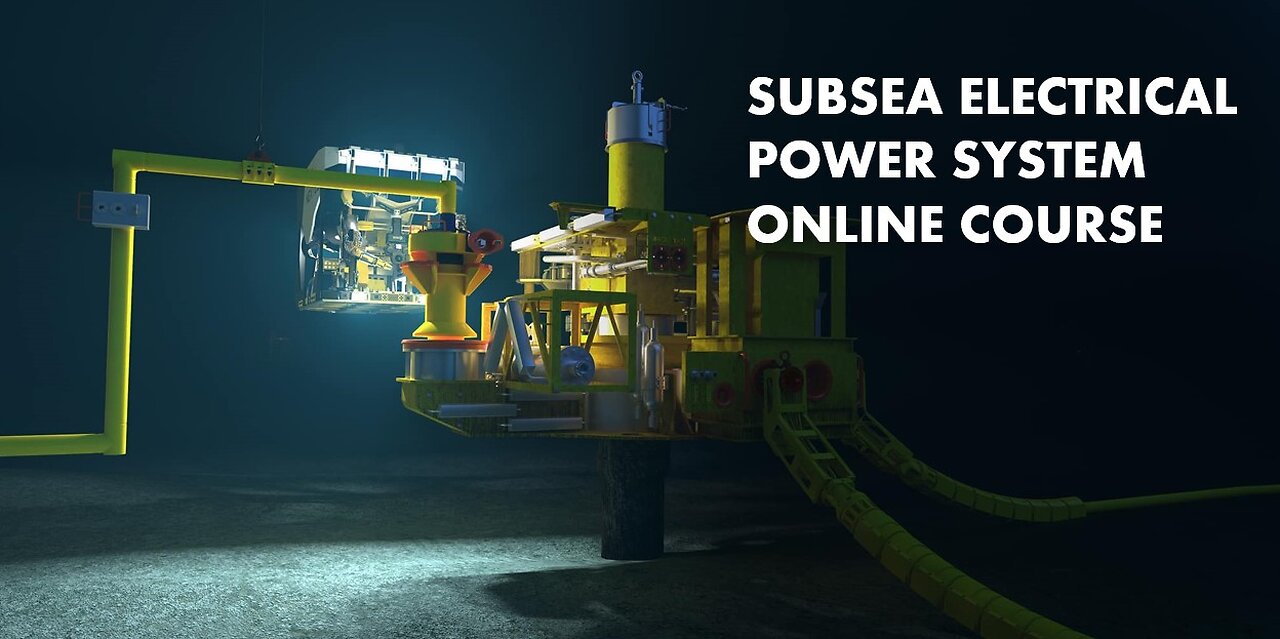Premium Only Content

Subsea Electrical Power System Online Course
The electrical power system in a typical subsea production system that provides power generation, power distribution, power transmission, and electricity from electric motors. The power is either generated on site (from a platform) or onshore (in a subsea-to-beach filed layout). To ensure continuous production from a subsea field, it is of utmost importance that the subsea system’s associated electrical power system be designed adequately.
Electrical Load Calculation
Electrical load calculation is one of the earliest tasks during electrical power system design. Engineers should estimate the required electrical load of all of the subsea elements that will consume the electricity so that they can select an adequate power supply. Each local load may be classified into several different categories, for example, vital, essential, and nonessential. Individual oil companies often use their own terminology and terms such as “emergency” and “normal” are frequently encountered. All of the vital, essential, and nonessential loads can typically be divided into three duty categories: Continuous duty; Intermittent duty; Standby duty (those that are not out of service).
Subsea power distribution systems are enablers for long-distance subsea tie-back developments and energy intensive processing activities on the seafloor. Providing power to subsea compressors, pumps and flowline heating, they are key to make viable and productive projects in deepwater, remote or harsh climate scenarios.
For full videos you can visit this link :
https://drive.google.com/file/d/1UzHWHovcOEzzIij1RoWtNFKlJvJeZlJb/view?usp=sharing
and you will be directed to a google drive link where you can download all files of this course
https://drive.google.com/file/d/1wnHVZHFAJfgQu1Nht83-ZCIfOVKt1aXX/view?usp=drive_link
-
 LIVE
LIVE
Welcome to the Rebellion Podcast
12 hours ago $0.72 earnedWhat Did I Miss? - WTTR Podcast Live 6/20
664 watching -
 LIVE
LIVE
Game On!
14 hours ago $0.70 earnedThe Lakers SOLD For $10 Billion! Lebron is NOT Happy!
149 watching -
 1:24:09
1:24:09
Nick Freitas
16 hours agoAre We Being Dragged Into War?
12.6K19 -

BEK TV
16 hours agoTrent Loos in the Morning 6/20/2025
7.98K3 -
 LIVE
LIVE
The Bubba Army
23 hours agoTrump prepares for MASSIVE bombing! - Bubba the Love Sponge® Show | 6/20/25
1,237 watching -
 LIVE
LIVE
FyrBorne
14 hours ago🔴Warzone Sniping: Is There A Benefit To Keyboard and Mouse Over Aim Assist?
93 watching -

DynastyXL
2 hours ago🔥 LIVE from Verdansk – Warzone Season 4 Begins! 🎯 GOAL 45 / 100 FOLLOWERS 🔥
9.36K1 -
 11:28
11:28
The Art of Improvement
21 hours ago $1.24 earned5 Small Habits That Have a Giant Return on Life
9.77K3 -
 13:50
13:50
Sugar Spun Run
1 day ago $1.95 earnedBlack Bottom Cookies
19.8K4 -
 9:32
9:32
CarlCrusher
1 day agoTic Tac UFO | Hurricane, Utah 2025 | Carl Crusher Psionic Contact Method
13.4K8